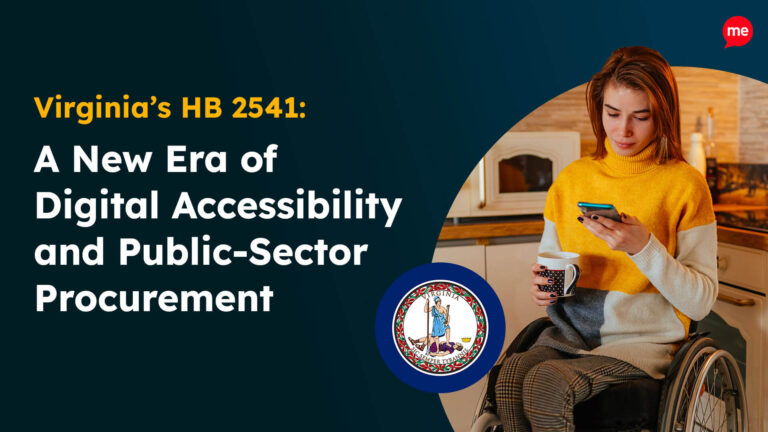As the saying goes, everything is bigger in Texas. That includes the population and the scope of the state’s digital accessibility laws.
Over 30 million people currently live in the Lone Star State. However, that number continues to grow, with an average of 395,000 new residents adding to the population each year due to factors like the welcoming climate, a booming economy, and the lack of state income state tax. Because no income tax is deducted from Social Security, pensions, IRAs, or 401(k)s either, Texas is an appealing location for retirees as well as young professionals and working families.
The result? A melting pot of ages, backgrounds, and abilities, all with varying digital accessibility needs. CDC statistics show that one in four Americans has a disability that can make navigating the online world challenging. In Texas, that equates to around 7.5 million people.
With this in mind, state lawmakers have enacted additional Texas web accessibility legislation to ensure optimum inclusion.
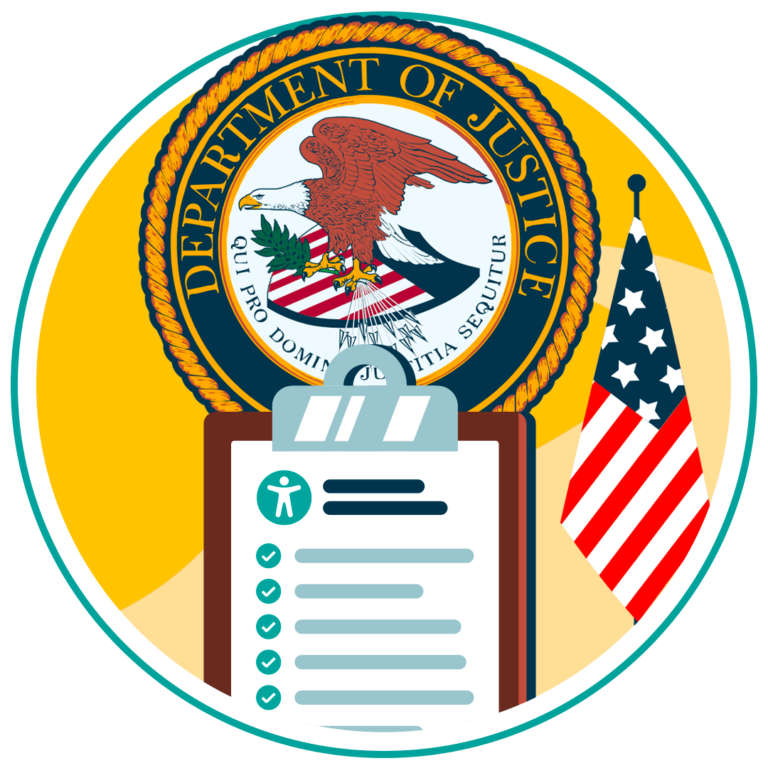
Web Accessibility Laws in Texas
Digital platforms pose an array of navigation and usability challenges for older adults, residents who speak and read English as a second language, and individuals with disabilities. Without additional measures to ensure inclusion, these individuals are often at an unfair disadvantage when it comes to accessing information, services, and resources.
Texas is one of the growing number of states that have introduced stand-alone policies that go above and beyond the minimum requirements of federal digital accessibility legislation. Let’s start with an overview of federal requirements before exploring Texas’s state-specific web accessibility standards.
The Americans With Disabilities Act (ADA)
The Americans with Disabilities Act (ADA) was enacted in 1990 to ensure individuals with disabilities were not treated less favorably in the physical world. However, as digital technologies became more prevalent and internet use more widespread, the key definitions were expanded to encompass digital platforms, which are viewed as extensions of physical spaces.
The ADA comprises five Titles, each with different business requirements, of which three apply directly to website accessibility:
- ADA Title I applies to any employer with more than 15 employees. It mandates that companies have an accessible website and provide inclusive candidate journeys for employees with disabilities.
- ADA Title II relates to public services and programs. It mandates that state authorities ensure disabled citizens have equal access to public services, programs, and activities.
- ADA Title III applies to all public-facing entities, including private businesses and nonprofits. It mandates that organizations make reasonable adjustments to provide full and equal enjoyment of their goods and services.
You can learn more about the Americans with Disabilities Act compliance in Texas here.
Section 508
Section 508 of the Rehabilitation Act mandates that federal agencies and government offices make electronic and information technology (EIT) accessible to people with disabilities. The law protects both federal employees and members of the public by making it a legal requirement to provide equitable access to digital resources.
It’s a common misconception that Section 508 standards only apply to websites. However, that’s not the case, as the law applies to any EIT produced, procured, or maintained by federal government bodies and agencies. This includes, but is not limited to:
- Computer software and hardware
- Electronic documents
- Emails and newsletters
- Video and multimedia content
- Learning resources
- Phone systems
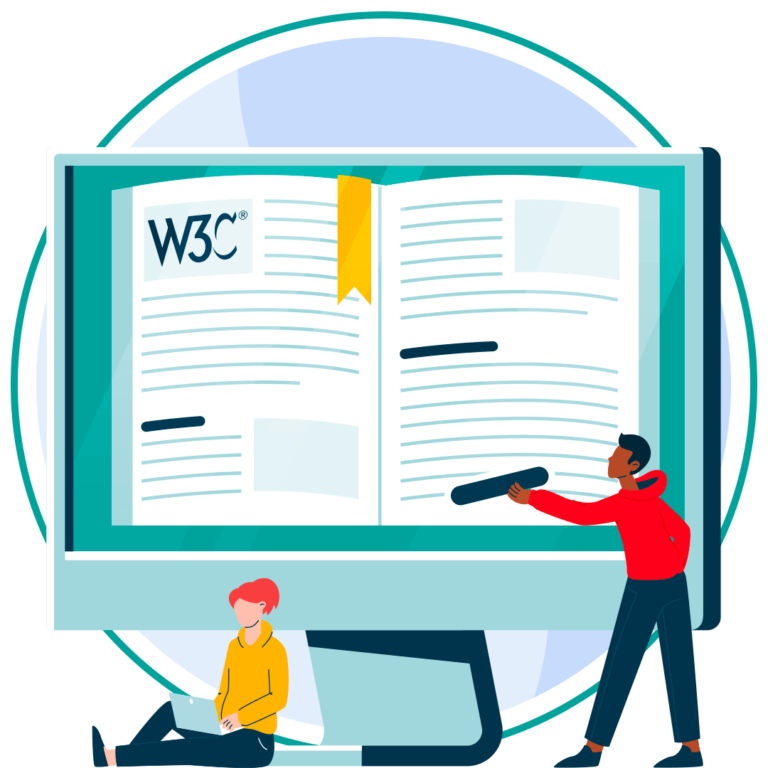
Texas Accessibility Standards (TAS) and The Texas Administrative Code (TAC)
In layman’s terms, the Texas Accessibility Standards (TAS) are the state’s own advanced version of the ADA. They include several additional regulations that ensure public facilities are designed and constructed to be as accessible as possible. At the moment, TAS stipulations only apply to physical spaces, and there are no specific stand-alone references to digital accessibility.
Conversely, the Texas Administrative Code (TAC) is the state’s advanced version of Section 508. As such, it is primarily applicable to government agencies, providing several digital legislation stipulations that remove online access barriers across the following areas:
- Accessibility
- Translation
- Privacy
- Linking
- Indexing
- High-Value Data Sets

Free Accessibility Compliance Check of your Website
Finding accessibility issues is now easier than ever. Recite Me offers a free automated scan of your website’s homepage to highlight non-compliance. You’ll get recommendations on how to fix them, helping to improve your accessibility score.
Which Businesses Do Texas Web Accessibility Laws Apply To?
The remit of each ADA Title and its applicability to employers, public sector organizations, and private businesses should be clear. However, many businesses mistakenly omit Section 508 and TAC considerations, thinking they apply only to government organizations. However, this is not the case, as the regulations also apply to third-party contractors and organizations receiving state grants or funding. This includes, but is not limited to:
- Safety, security, and defense contractors.
- Technology, software, and telecommunications providers.
- Architectural, engineering, and construction firms.
- Ancillary service providers like catering and janitorial companies.
- Charities, conservation groups, research institutions, and community development organizations.
- Healthcare, finance, education, and transport organizations.
Consequences of non-compliance
The financial repercussions of non-compliance can be severe:
- Federal violations for ADA and Section 508 lead to lawsuits. Breaches can reach up to $55,000 for the first violation, rising to $110,000 for each subsequent violation.
- Texas Accessibility Standards breaches may result in fines imposed by the Texas Department of Licensing and Regulation. These are set at $500 to $3,000 for the first violation, $1,500 to $4,000 for the second violation, and $2,500 to $5,000 for further violations.
- Texas Administrative Code breaches may result in a variety of financial penalties, ranging from $200 to $1,000 per day.
However, dollar-value fines are not the only consideration. The negative PR associated with failing to be inclusive in today’s increasingly ethical society can result in several additional bottom-line repercussions. A few examples include:
- Boycotts
- Loss of direct sales revenue
- Reduced brand loyalty
- Reduced employee morale
- Reduced shareholder confidence
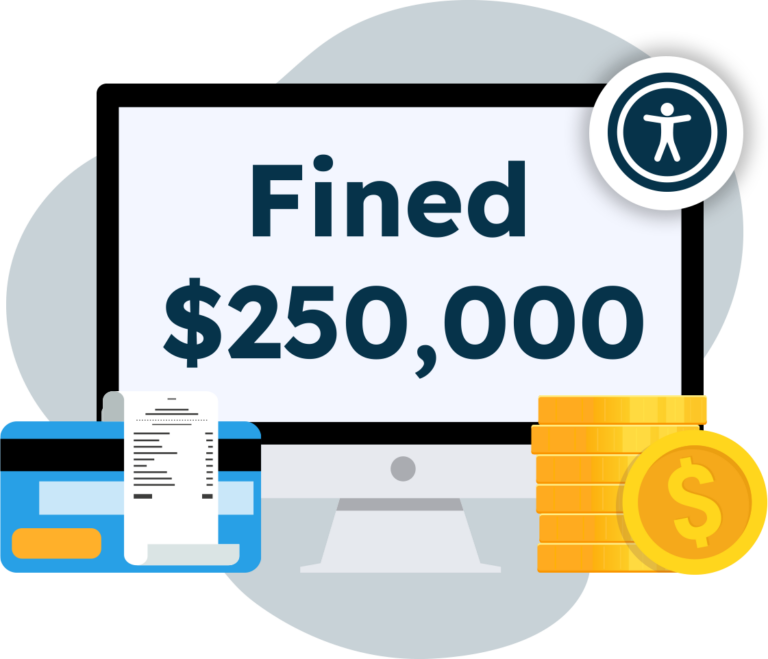
Notable Digital Accessibility Lawsuits in Texas
Having established that web accessibility laws in Texas can affect both public and private entities, let’s examine a couple of the most notable examples.
Legal Proceedings Against the State
In 2023, the Department of Justice (DoJ) found that four Texas counties violated Title II of the Americans with Disabilities Act by operating election websites that failed to meet federal benchmarks for web accessibility. Cited accessibility barriers included:
- Poor keyboard accessibility.
- PDF documents with missing tags and alternative text.
- Improper heading levels and heading use.
- Redundant page tiles.
- Missing language attributes.
- Empty hyperlinks.
Legal Proceedings Against Private Entities
In 2016, James Close filed a lawsuit against DASI, LLC in the District Court for Western District of Texas San Antonio. Close sought injunctive relief, attorney’s fees, and the outlay of any remedial costs involved in making the DASI website accessible as per Title III of the Americans with Disabilities Act.
The full details of the case have yet to be disclosed to the public. However, it’s worth noting that James Close, who is legally blind, has filed several more accessibility lawsuits under ADA Title III in other jurisdictions and states, including several in Arizona. Such actions serve to remind organizations that the consequences of excluding just one person can be significant.

The Importance of WCAG Compliance
The Web Content Accessibility Guidelines (WCAG), developed and published by the World Wide Web Consortium (W3C), are considered the global gold standard of digital accessibility best practices. Like many other nations, the US has adopted WCAG as the foundational framework for digital accessibility legislation initiatives.
When the ADA legal framework was initially developed, compliance criteria were set according to WCAG 2.0 Level AA. Legally, that meant that no organization had to comply with the most up-to-date version of WCAG, nor was there a need to exceed Level AA criteria. However, as WCAG version 2.1 Level AA is now the basis of 75% of all federal claims, this has now become the expected level of compliance, and additional compliance efforts in line with WCAG 2.2 are recommended to avoid unnecessary legal risk.
Confused about the differences between WCAG and the ADA? Then check out our blog.
Stay ahead of the game when it comes to Digital Accessibility laws and compliance in the United States. Learn about all the different federal and state-level regulations, see real examples of web accessibility lawsuits in different regions and discover a 7-step action plan for building accessible websites.
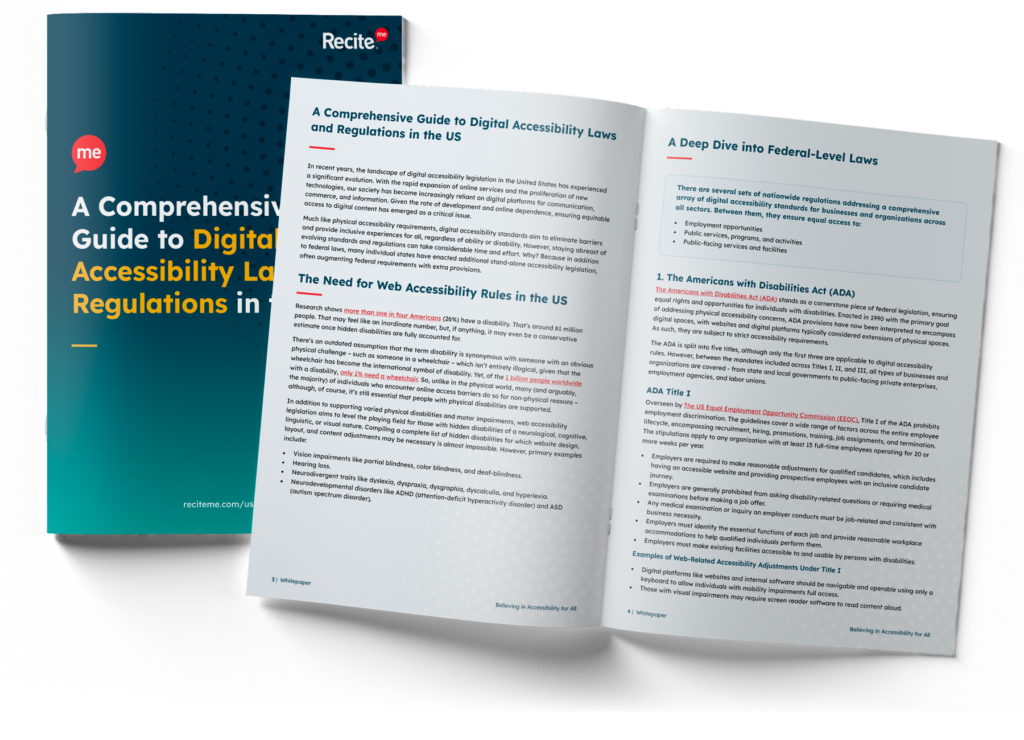
How to Make Your Website Compliant with Texas Web Accessibility Laws
Achieving compliance with Texas web accessibility laws isn’t just about meeting legal requirements – although that’s certainly a primary consideration for many organizations. It’s also about fostering inclusivity, given that Texas is America’s second most diverse state.
To help organizations with their inclusion and digital accessibility goals, Recite Me has developed a suite of on-demand accessibility software.
1. Compliance Tools
The Recite Me Accessibility Checker conducts 396 separate scans aligned with WCAG criteria and then generates a detailed report indicating areas of non-compliance and a prioritized fix queue to ensure maximum impact in the shortest possible time frame.
Schedule a free demonstration or run a free scan today!
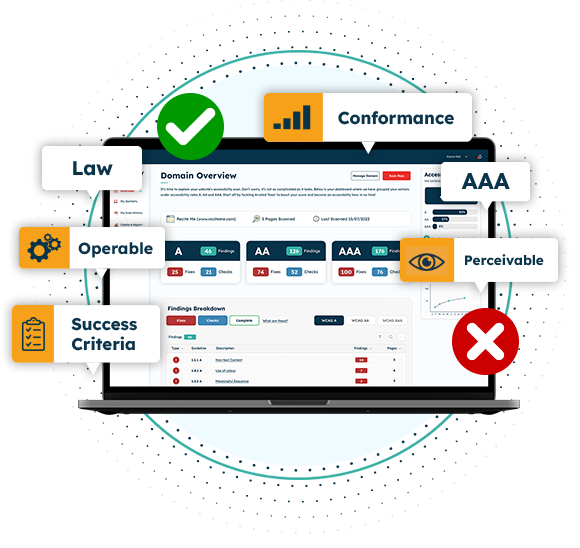

2. Individual Customization Tools
The Recite Me Toolbar promotes inclusivity on an individual user level by enabling website visitors to customize fonts, colors, and various other page elements according to their personal needs and preferences. This allows website visitors with sight loss, cognitive impairments, learning difficulties, physical disabilities, varying linguistic needs, etc, to enjoy more predictable and familiar browsing experiences.
Schedule a free demonstration, or try the toolbar today!

